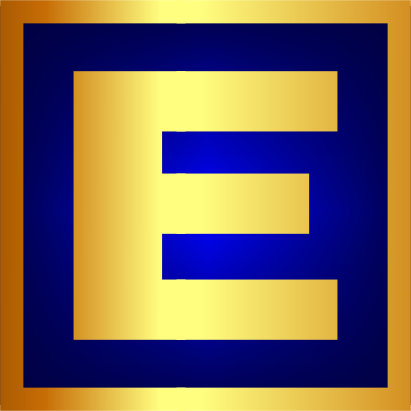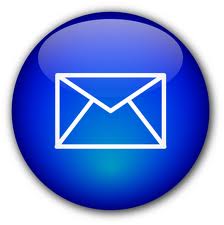Rhythm, Pulse & Percussion In Tapping TreatmentsIt is interesting to observe people "tapping themselves" People have very different natural rhythms, and then there's of course a great variance in how hard or softly someone taps. The "how" of tapping greatly affects how effective the treatment is, in the end.
Added Feb 5, 2002
|
| 10,483 Reads
Considering what fine and responsive systems we are dealing with here in the form of complex meridian points and nerve junctions, it stands to reason that the "how to" of tapping with fingers on skin has a lot to do with how effective the treatment is.
To Tap Or Not To Tap?
There are, of course, alternatives to tapping. In Touch & Breathe, you just hold the points (here, once more, is the issue of how hard you push down or what "holding" means to an individual).
I personally like to gently and lightly massage the points with a single fingertip in a very small circular movement. There is a technique called Tellington Touch where acupressure points are stimulated by sliding the skin over the point first in a full circle (from 12 o'clock to 12 o'clock) and then and without releasing the light pressure that holds the skin steady, back to the 6 o'clock position. Try it for yourself, it is an interesting effect.
Stroking downwards as though you were removing a small stain is another movement that is nice and stimulates the area in an unusual way.
The non-tapping, more massage orientated ways of stimulating the points is a good alternative on "painful points" where tapping is actually rather uncomfortable, or when the points appear to be very sore. Young children and people who have been traumatised, for example by being hit in the face, can also feel much happier when the points are stroked gently or lightly massaged instead. In cases of headaches, toothaches or any other type of pain that is made worse by the application of percussive beats, these are the only possible choice.
"Percussing"
We usually nowadays talk of tapping, but when the techniques were first invented, it was called "percussing" on the points.
The reason for this phrase was that the tapping movement has a fast "touch - release" pulse to it, like one would tap on a drum to make it ring out.
This is a particular movement because if you "follow through" too much with your original tap or impact, it deadens the resonance response and in the case of a drum, the sound is dull and stops dead after the impact. In order to allow the drum to resonate, a pulse has to be swiftly put in and then the pressure removed so the drum's skin may resonate and vibrate backwards and forwards to make the sound.
Resonance
This is similar to the effects of tapping - the most responses are received when the tapper knows how to do the swift "tap and release" movement.
In trainings, I sometimes have practitioners practise this on any object that serves like a drum to find the exact type of movement that gives the most resonance and doesn't "deaden the instrument".
Pulse and Rhythm
Many times, people tap themselves and nothing seems to happen; yet when a friend or a practitioner takes over the tapping for them, with the self same opening statement, often the shift we are looking to create does occur.
I have noticed in other areas that people have *one preferred rhythm* which they will produce under many different circumstances time and time and again - whilst walking, dancing, breathing, in repetitive tasks of work and often also reflected in their choice of music.
It would be interesting to speculate that when they tap in that self same rhythm as they would naturally do, a sameness to the already existing conditions makes it less effective.
Unless you tell people to try some different rhythms, they will usually fall back on the "one and only" preferred type of pulse that generally pervades them.
There are a number of ways to try different tapping rhythms. One would be to just speed up and slow down, but more interesting rhythms develop when one considers for example, a popular or well known song that "matches the problem" and applies that rhythm to the opening statement.
Non-rhythmical tapping is another interesting possibility to unstick stuck states (i.e. problems or opening statements that have been addressed many times but nothing seems to happen). It is actually quite difficult to not fall back into one's preferred rhythm and that in and of itself adds a new dimension and new possibilities as established, old patterns are being challenged with a "new rhythm".
Echo Pulses
Try different types of strength, rhythms (from a woodpecker beat to a slow, steady heartbeat and the range in between) and also what I call "echo pulses" where you give one tap and wait for all reverberation to have ceased, then place another pulse after it. This gives a particular rhythm which is usually completely different and entirely dependent on the opening statement or issue you're currently working with.
In conclusion, I would encourage anyone who uses tapping therapies to play with all the aspects of stimulating the meridian points and to especially notice what people are actually doing as well as noticing how making changes in "the way you tap" affects the outcome of the treatment.
Silvia Hartmann
Added Feb 5, 2002
|
| 10,483 Reads
🗣 Chat!
Silvia Hartmann
Training courses and events with Silvia Hartmann:
GoE Townhall Meet Up LIVE - News 🌟 Views 🌟 ENERGY! with Silvia Hartmann & Alex Kent
30 Jan 2026 -
Silvia Hartmann has the following products in the store:
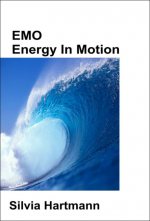
EMO: Emotions, Energy, Information & Love, 2nd Edition
Posted Nov 3, 2016
Powerful information every person on this Earth needs to hear about. Fifteen years of EMO in theory and practice have taught us so much about energy, how it works with human emotion but also with...
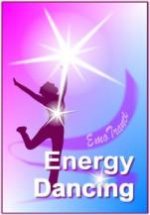
Energy Dancing I
Posted Mar 23, 2010
Energy Dancing is a completely natural and intuitive way to increase energy flow throughout the body. This causes emotions to change for the better, as well as being a very fast method to de-stress...
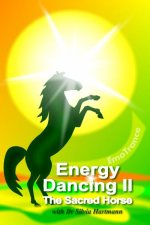
Energy Dancing II: The Sacred Horse
Posted Mar 21, 2010
Magic Dancing: Energy Dancing with The Sacred Horse.
Experience profound relief, release, de-stress and energize your mind, your body, your energy body with this brilliant NEW self help program...
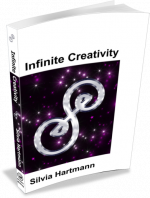
Infinite Creativity: The Project Sanctuary Story
Posted Jun 17, 2014
Infinite Creativity: The Project Sanctuary Story by Silvia Hartmann comes 16 years after the original Project Sanctuary manual was released. If you are interested in unlocking your minds full...
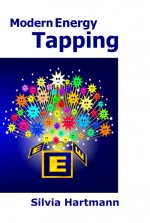
Modern Energy Tapping by Silvia Hartmann
Posted Jan 18, 2018
Following two decades of research with classic tapping, Energy in Motion, Energy EFT and Positive EFT comes Modern Energy Tapping - a system designed from the ground up to get you and your clients...
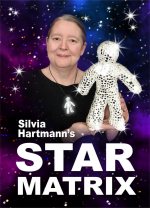
Star Matrix by Silvia Hartmann
Posted Oct 5, 2021
This is the Star Matrix book by Silvia Hartmann. Purchase through DragonRising to get immediate access to gain your certificate in Star Matrix Foundation.
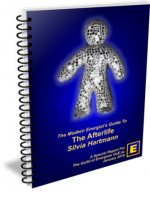
The Modern Energist's Guide To The Afterlife: Soul Lessons For This Life -...
Posted Feb 1, 2018
In this Special Report, GoE President Silvia Hartmann takes us through an amazing journey to the afterlife - and beyond. If you have always wondered about the reality of the immortal soul, wanted...
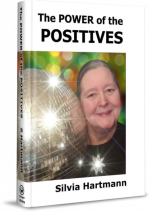
The Power of The Positives (2023): Beyond Positive Psychology, Positive...
Posted May 5, 2023
Do you want to feel better, achieve more, and live a life of meaning and purpose? If so, you need The Power of the Positives by Silvia Hartmann, the creator of Modern Energy.
This eBook will show...
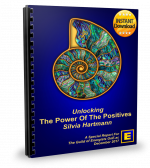
The Power of The Positives SPECIAL REPORT (2017): Unlocking The Extraordinary...
Posted Dec 31, 2017
In this special report, Silvia Hartmann takes us deep into the Power of the Positives and guides us to the next step on our journey into the undiscovered country on the positive side of the Modern...
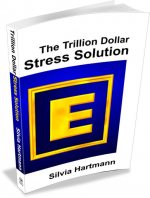
Trillion Dollar Stress Solution
Posted Oct 3, 2017
The Trillion Dollar Stress Solution: MODERN Stress Management - From Stress To Success.
Very rarely, a book comes along that has the power to change the way we see the world. Silvia Hartmann's...
Silvia Hartmann has kindly contributed the following titles to the 🏫 GoE Library:
4 Cool Energy Hacks For Procrastination, Anxiety & Self Doubt - Video with...
Posted Oct 2, 2018
Raise energy FAST with these 4 quick and easy techniques to overcome procrastination, anxiety and self doubt presented by Silvia Hartmann: Heart Healing, EMO Energy In Motion, Modern Energy Tapping...

80+ NLP Neurolinguistic Programming Articles With Energy In Mind
Posted Apr 24, 2015
NLP Neurolinguistic Programming with energy in mind themed articles by Silvia Hartmann. Includes over eighty articles on subjects including Learning NLP, NLP and Energy, NLP Essays, NLP and...
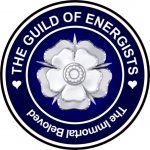
Bereavement Healing With Modern Energy - The Immortal Beloved Protocol by...
Posted Mar 13, 2023
Help people with their bereavement with the Immortal Beloved protocol developed and written by Silvia Hartmann.
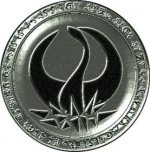
DragonRising Radio Show
Posted Jan 8, 2018
DragonRising is the publishing arm of the Guild of Energists and they've released some of the most outstanding and innovative audio products available, including: HypnoSolutions, HypnoDreams,...
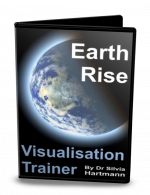
Earth Rise Visualisation Training Audio 2006
Posted Jan 23, 2017
Earth Rise is a short energy hypnosis program created by Silvia Hartmann to improve the ability to visualise in internal representations. Use the exercise repeatedly and/or use in conjunction with...
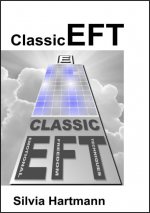
Easy EFT, Adventures in EFT, The Advanced Patterns of EFT and EFT & NLP -...
Posted Oct 22, 2019
Classic EFT Tapping by Silvia Hartmann is a compendium of some of the most important and influential classic EFT books available, including:
Easy EFT by Silvia Hartmann - Introductory guide to...
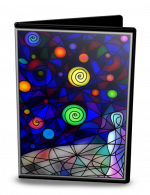
Elory's Joy Audio Recording 2005
Posted Jan 23, 2017
A rare audio recording of Silvia Hartmann telling the story "Elory's Joy" with a sound track by Ananaga Sivyer.
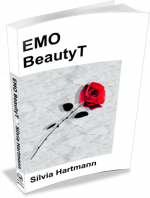
EMO BeauTy T Complete
Posted Jan 19, 2017
Follow with this fascinating transcript as Silvia Hartmann builds a brand new, shiny fresh and young body image from the ground up, step by step as this extraordinary training unfolds. Based on the...

EMO Beauty T Live Recording with Silvia Hartmann
Posted Feb 5, 2020
Members are invited to listen the complete audio recording of the 2004 BeautyT live training with Silvia Hartmann in the UK.
This is a unique opportunity to listen to the complete set of LIVE...

Energy EFT Master Practitioner Live Recording with Silvia Hartmann
Posted Nov 26, 2019
In March 2012, Silvia Hartmann (President & Founder of The GoE) conducted a three day Energy EFT Master Practitioner live training near London Gatwick and we took along our cameras to record...

Energy EFT Presentation by Silvia Hartman
Posted Mar 8, 2017
43 minute video recording of Silvia Hartmann presenting on Energy EFT at the Living Energy 2012 conference.
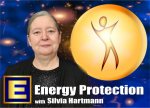
GoE Energy Protection Course
Posted Feb 3, 2021
Silvia Hartmann's GoE Energy Protection is a free video course on energy/psychic protection for GoE Members to enjoy, be inspired by and stay protected.

GoE Modern Energy Foundation Course (The Energy Course), 2023 Edition
Posted Nov 3, 2022
Silvia Hartmann's GoE Modern Energy Foundation is a free online certified video course for GoE Members.
Presented over five hours of online training, this course covers: The Modern Energy Chart,...

GoE Visibility Course: The Modern Energy Way with Silvia Hartmann
Posted Feb 23, 2021
Silvia Hartmann's "GoE Visibility: The Modern Energy Way" is a free video course for GoE Members for increasing confidence in being heard and seen on YouTube, social media, video calls and more.

GoE2013 - P01 - Positive Energy with Silvia Hartmann
Posted Nov 10, 2013
Silvia Hartmann's keynote presentation on Positive Energy to the delegates of the GoE Energy Conference 2013

GoE2013 - P09 - Project Sanctuary - Infinite Creativity with Silvia Hartmann
Posted Nov 10, 2013
Silvia Hartmann presenting on Project Sanctuary - Infinite Creativity at the GoE Energy Conference 2013

GoE2014 - P01 - Keynote: Soul Matters with Silvia Hartmann
Posted Nov 1, 2014
The energy system is a fascinating place with levels and layers, and so much to discover. By now, almost everybody knows that to mess with the heart centre is a very bad idea and leads to all...

GoE2014 - P12 - Marketing for Energists with Silvia Hartmann
Posted May 4, 2017
In 2014, Silvia Hartmann brought together a special think tank to tackle the evergreen problem of MARKETING from the Energist's perspective and from the ground up. Modern energy work is a hugely...

GoE2016 - P01 - Keynote: We Love Energy with Silvia Hartmann
Posted Nov 1, 2016
Silvia Hartmann's keynote presentation from the GoE Energy Conference 2016, where she unveiled the "Big E" and we officially became the Guild of Energists.

GoE2016 - P13 - Energy Constellations – Created by Silvia Hartmann –...
Posted Apr 6, 2018
One hour video presentation by Ilka Wandel on Silvia Hartmann's "Energy Constellations". Also included is Silvia Hartmann's Energy Constellations Adobe PDF file to download and study at home.
To...

GoE2016 - P20 - Supermind: A New Intelligence For Energists?
Posted Oct 12, 2018
For the last 23 years, brave souls have been venturing into Project Sanctuary, the original universal sandbox designed to learn the mysterious, fascinating and enchanting ways of the energy mind....

GoE2017 - P01 - The Love Challenge with Silvia Hartmann
Posted Jan 20, 2018
GoE President Silvia Hartmann's keynote presentation for the GoE Energy Conference 2017.
The positive side of the Modern Energy Chart is truly "The Undiscovered Country" - it is a new world, a...

GoE2021 - P01 - The Miracle Expansion with Silvia Hartmann
Posted Nov 25, 2021
In this opening plenary speech to the conference, GoE President Silvia Hartmann presents on the The Miracle Expansion - a new definition, new concepts, new worlds and new possibilities!

GoE2021 - P09 - New Worlds Modern Energy Art Exhibition with Silvia Hartmann
Posted Nov 25, 2021
Join Silvia Hartmann for a virtual Modern Energy Art Exhibition.

GoE2021 - P12 - Closing Plenary: Tapping Into YOUR Miracle Expansion with...
Posted Nov 25, 2021
For the finale, let's come together and TAP for our new miracles! The future is what we create, right here, right now... let us together create a new field of miracles.

GoE2024 - S1 - The Future Of Modern Energy
Posted Nov 13, 2024
In "The Future of Modern Energy," Silvia Hartmann introduces a transformative vision of energy, grounded in 30 years of exploration and research into how energy flows between individuals and their...

GoE2024 - S2 - The Future of Modern Energy Therapy
Posted Nov 13, 2024
In "The Future of Modern Energy Therapy," Silvia Hartmann outlines her vision for the future of Modern Energy Therapy.

GoE2024 - S3 - The Future of Modern Energy Training
Posted Nov 13, 2024
In the 'The future of Modern Energy Training' Silvia Hartmann emphasizes the need to create uplifting experiences that enable trainers and students alike to grow and evolve.

GoE2024 - S4 - Our Future Starts Now!
Posted Nov 13, 2024
Here we are, my dear fellow multi-dimensional beings, at this precise moment where we always are – always sliding along our personal timeline, always in the moment of unfoldment, and our futures...
How A Child Sex Abuse Survivor Healed 1 MILLION Hearts - Video with Silvia...
Posted Oct 9, 2018
The extrordinary story how a distraught child sex abuse survivor triggered a chain of events that has helped to heal a million broken hearts - so far! - Video with GoE president Silvia Hartmann
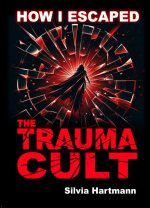
How I Escaped The Trauma Cult (And You Can Too, If You Want To!)
Posted Jul 8, 2024
Break free from the past and embrace a future of hope and happiness with Silvia Hartmann's "How I Escaped The Trauma Cult."
The Madness Of The Western World - An Exponential Curve Of Insanity has...
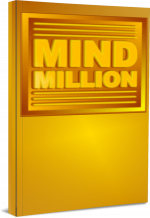
MindMillion 2005 by Silvia Hartmann - Complete Text
Posted Feb 10, 2017
MindMillion by Silvia Hartmann - Complete book has been added to the Library.
In this extraordinary book, you will find the tried and tested remedies, techniques, tools and most of all, the shining...

MindMillion Articles 2005 - 2012
Posted Jan 22, 2012
MindMillion articles on business success from the energy perspective (pre-Energy EFT/Positive EFT) 2005 - 2012. Includes over seventy articles.

MindMillion Exercises by Silvia Hartmann: The 60 Second Wealth Creators
Posted Apr 15, 2023
Welcome to MindMillion by Silvia Hartmann: 365 modern energy exercises for wealth, money, abundance in its widest metaphorical sense, to de-stress, re-focus and improve energy flow fast.
Each...

Mirror Charm Sanctuary - Evolving Metaphors Masterclass
Posted Nov 24, 2022
For members of the Guild of Energists, Silvia Hartmann has gifted you a special members-only practitioner master class in evolving metaphors in sanctuary.
It’s beautiful and advanced Modern Energy...
Modern Energy 101 - The Modern Energy Chart In A Nutshell - Video by Silvia...
Posted Oct 23, 2018
Never heard of Modern Energy? Check out this 5 min intro that might just change your life! Here is how to do "emotional wellness" "emotional intelligence" and how to get from stress to success in...

Modern Energy Tapping Presentation with Silvia Hartman
Posted Apr 16, 2018
27 minute video of author Silvia Hartmann presenting on Modern Energy Tapping at the GoE Positive Energy Day which took place at Sedgwick Park UK in 2014.
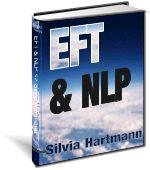
NLP & Classic EFT Special Report 1999-2009
Posted Feb 25, 2017
Classic EFT & NLP is a special report by Silvia Hartmann for NLP Practitioners on how to use Classic EFT, which covers how to use Classic EFT to enhance NLP abilities in the self; how to use...
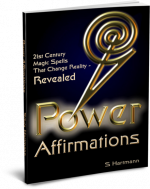
Power Affirmations Special Report 2008
Posted Feb 26, 2017
Power Affirmations - 21st Century Magic Spells That Change Reality - 2008 Special Report by Silvia Hartmann, full text.
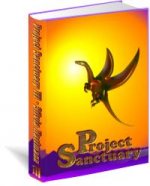
Project Sanctuary III 1996-2002
Posted Jan 27, 2017
Silvia Hartmann's groundbreaking Project Sanctuary. Third edition 2002, published 2003. Complete text.
Project Sanctuary is a unique set of processes using intention, energy and metaphor,...

Project Sanctuary: First Sanctuary with Silvia Hartmann
Posted Mar 12, 2018
Project Sanctuary is easy, and fun. In this straightforward, friendly 14 minute free meditation, GoE President Silvia Hartmann guides you through the process of setting up a "first Sanctuary". Use...
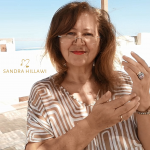
Sandra Hillawi: Wishing Silvia Hartmann A Fabulous Retirement
Posted Nov 19, 2024
Wishing Silvia Hartmann a fabulous retirement!

Sex In Sanctuary
Posted Jun 19, 2018
Special Report by Silvia Hartmann for all members to read free in the library, however prior knowledge of SuperMind, Infinite Creativity and Project Sanctuary is advised.
Need to read Infinite...
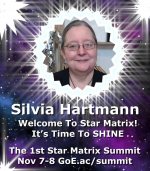
Star Matrix Summit 2020
Posted Feb 18, 2021
We're delighted to make the complete inaugural Star Matrix Summit available to members to enjoy. In this video series, Silvia Hartmann interviews key members on their own personal breakthroughs...

Sunday Live with Silvia Hartmann
Posted Feb 25, 2020
Watch the complete collection of live streams with GoE President Silvia Hartmann including energy exercises and latest news from the GoE.
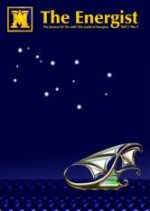
The Energist - Vol 2014.1.1 - Voyager
Posted Jun 1, 2014
Summer 2014 edition of The Energist magazine.
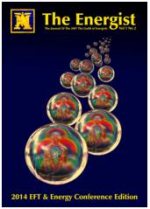
The Energist - Vol 2014.1.2 - Conference Special
Posted Oct 1, 2014
Autumn 2014 edition of The Energist magazine.

The Energist - Vol 2015.2.1 - New Beginnings
Posted Jan 21, 2015
Winter 2015 edition of The Energist magazine.
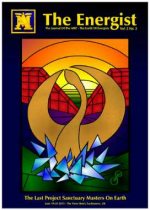
The Energist - Vol 2015.2.2 - Project Sanctuary
Posted Apr 9, 2015
Spring 2015 edition of The Energist magazine.

The Energist - Vol 2015.2.3 - It's OUR Time to Shine
Posted Jul 27, 2015
Summer 2015 edition of The Energist magazine.
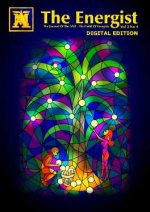
The Energist - Vol 2015.2.4 - Harvesting From The Tree of Lights
Posted Sep 1, 2015
Autumn 2015 edition of The Energist magazine.

The Energist - Vol 2016.3.1 - Energy EFT Foundation
Posted Mar 19, 2016
Spring 2016 edition of The Energist magazine.

The Energist - Vol 2017.4.1 - The Best Year Ever!
Posted Feb 1, 2017
Spring 2017 edition of The Energist magazine.
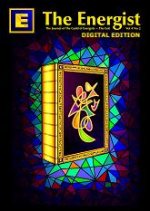
The Energist - Vol 2017.4.2 - The Energy of Learning
Posted May 26, 2017
Summer 2017 edition of The Energist magazine.

The Energist - Vol 2018.5.1 - The Power of the Positives
Posted Feb 20, 2018
Winter 2018 edition of The Energist magazine.
Available to read online on smart phones, tablets and in browsers, plus also the option to download as an Adobe PDF file for printing out at home or...
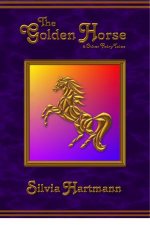
The Golden Horse & Other Fairy Tales by Silvia Hartmann
Posted Nov 15, 2022
Created by Master Story Teller Silvia Hartmann For Magical Children Aged 9 - 99, The Golden Horse is an anthology of absolutely original, highly creative stories told in traditional fairy tale...
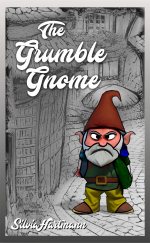
The Grumble Gnome Fairy Tale by Silvia Hartmann
Posted Dec 23, 2022
A great traditional fairy tale to enjoy for the magical child within, or the magical child in your life in Silvia Hartmann's unique energy writing style.
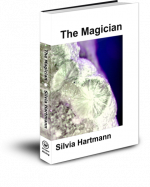
The Magician by Silvia Hartmann
Posted Jun 1, 2023
The Magician - 28 Lessons In Magic; a novel by Silvia Hartmann.

The Orb of Prosperity by Silvia Hartmann
Posted Feb 9, 2022
This Modern Energy Meditation is for anyone who wants to connect with the energy of prosperity, whatever that means to you.
Inspired during the Energy Show "The Spirit of Prosperity," here is the...
The Real Secret How To Become A Millionaire - Video with Silvia Hartmann
Posted Oct 16, 2018
Do you want to be a millionaire? Check out these amazing Top 5 Tips from GoE president Silvia Hartmann

The Star Matrix Story with Silvia Hartmann
Posted Oct 23, 2019
What is Star Matrix? Where did it come from? Why is Star Matrix so important for the people of the 21st Century? Why do we need to escape the brainwashing of the Trauma Trap? What are Star Events,...

Video Clips From - Modern Energy Foundation 1 - Your Happiness Matters:...
Posted Nov 6, 2018
Video clips from Silvia Hartmann's Modern Energy Foundation online course:
Unit 1: Why Your Happiness Matters - An Introduction to Modern Energy
These are made available to you to watch for your...
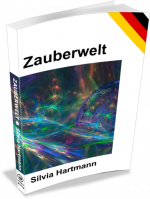
Zauberwelt by Silvia Hartmann - Auf Deutsch/German Language Edition 2004
Posted Jan 13, 2017
Zauberwelt is an introduction to the magical world of modern energy. In this charming book, Silvia Hartmann explains in simple words and simple examples how different our world looks when we really...
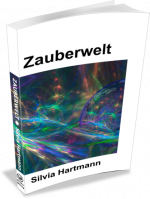
Zauberwelt English Language Edition Translated by Silvia Hartmann 2004
Posted Jan 13, 2017
Zauberwelt is an introduction to the magical world of modern energy. In this charming book which has been translated from the original German language edition, Silvia Hartmann explains in simple...
Contact details and membership information for Silvia Hartmann:
|

 Home
Home
